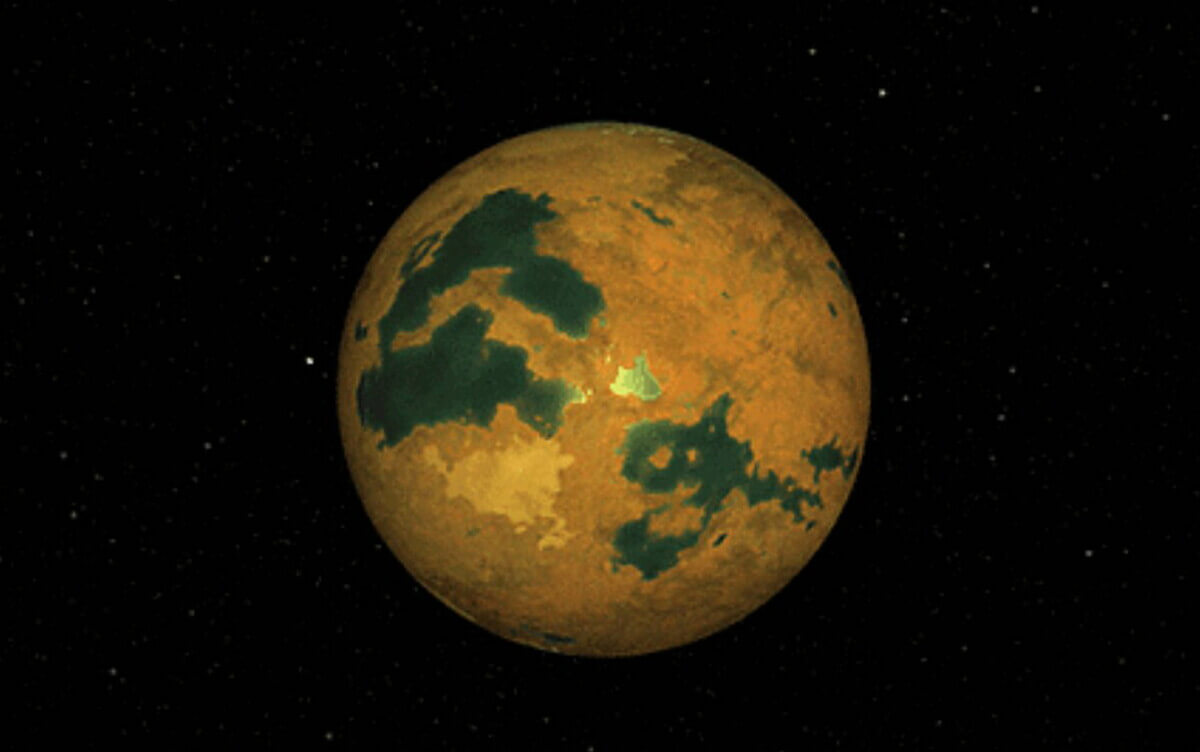
Artist's concept of a previously proposed possible planet, HD 26965 b – often compared to the fictional "Vulcan" in the Star Trek universe. (Credit: NASA JPL-Caltech)
PASADENA, Calif. — Star Trek fans, you may want to sit down for this one. It seems Vulcan is not a real planet after all! In a plot twist worthy of the iconic sci-fi show itself, the planet thought to orbit the star 40 Eridani A – the fictional home of Mr. Spock's planet Vulcan – appears to be nothing more than an astronomical illusion.
A new study using NASA's NEID instrument has confirmed that the planet astronomers believed they discovered years ago in this distant star system is just a mirage caused by the star's own pulses and jitters.
The possible detection of a planet orbiting the star made famous by Star Trek drew excitement and plenty of attention when astronomers revealed their findings in 2018. However, just five years later, the planet's existence was called into question by other researchers. Now, precision measurements using the NASA-NSF NEID instrument, installed atop Kitt Peak in Arizona, seem to have returned the planet Vulcan to the realm of science fiction for good. The findings are published in The Astronomical Journal.
How did researchers make this discovery?
The NEID instrument, like other radial velocity instruments, relies on the “Doppler” effect: shifts in the light spectrum of a star that reveal its wobbling motions caused by the gravitational tug of an orbiting planet. However, parsing out the supposed planet signal at various wavelengths of light emitted from different levels of the star's outer shell, or photosphere, revealed significant differences between individual wavelength measurements and the total signal when they were all combined. This suggests that the signal suggesting the existence of a planet is more likely the flickering of something on the star's surface that coincides with its 42-day rotation period.
Simply put, from our viewpoint here on Earth, it's been hard to tell if we're seeing a planet pass in front of 40 Eridani A or if it's just some kind of sunspot regularly popping up on our telescopes. Now, scientists believe it's the latter.
The astronomers applied several new analysis techniques to the NEID data to disentangle the planetary and stellar possibilities. They looked for subtle phase shifts between the velocity signal and other indicators of magnetic activity, something that would not be expected for a planet signal. They also looked at how the signal strength changed for different subsets of spectral lines, finding trends more consistent with magnetic activity than a planet. Lastly, they showed that a simple model of stellar activity could explain most of the observed signals — without needing to a planet to do it.

While the new finding, at least for now, robs star 40 Eridani A of its possible planet Vulcan, the news isn't all bad. The demonstration of such finely tuned radial velocity measurements holds the promise of making sharper observational distinctions between actual planets and the shakes and rattles on surfaces of distant stars. As astronomers push towards detecting smaller and smaller planets, being able to distinguish between planetary and stellar signals is becoming increasingly important.
Ironically, this isn't the first time Vulcan has gone up in a puff of smoke! In 2009, the rebooted Star Trek films actually blew up planet Vulcan, tearing it apart with an artificial black hole. For now, it seems the late Leonard Nimoy's iconic character, Mr. Spock, will have to look for a new home in the cosmos once again.
EdNews Editor Chris Melore contributed to this report.










